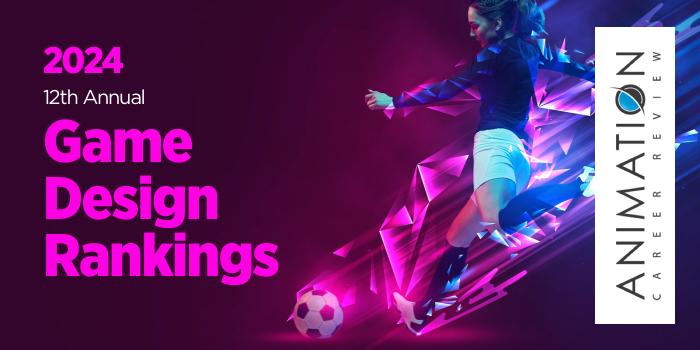The College of Communication Arts and Sciences (ComArtSci) and the College of Engineering at Michigan State University (MSU) provide several paths to study game design. Serving more than 3,500 students, the ComArtSci houses the Department of Media and Information (MI)—home to the Game Design and Development Program. Established in 2005, the program consists of a Games and Interactive Media BA, a Game Design and Development minor, a Media and Information MA (MI MA), and a Serious Games MA certificate.
The College of Engineering at Michigan State University houses the Department of Computer Science and Engineering—home to the Computer Science (CS) program. Available pathways include the BS, MS, and PhD. All programs allow students to specialize in MI Studies, with the option to take games-related courses in other departments. Students in all programs will also take courses in Systems Design and Analysis; Theory and Algorithms; and Data Analysis and Applications.
The Game Design and Development minor in the College of ComArtSci can also be added any other major at MSU. The program requires 15 credit hours, including courses such as Game Design and Development I and II; Collaborative Design; and Game Design Studio.
The Serious Games MA certificate attracts MSU MI graduate students, CS students, Master of Arts in Educational Technology (MAET) students, and doctoral students from other universities. However, the certificate is open to all MSU graduate students as a stand-alone program. Courses include Theories of Games and Interaction Design; Understanding Users; and Foundations of Serious Games. The Serious Games MA certificate is transcriptable, and it can be completed on campus or online.
The MSU Games and Interactive Media BA is a collaborative, project-based program with three focus areas: Game Design, Games Graphics and Animation, and Game Development. Students in all areas will explore the design process, effects, artistry, management, and production of video games, emerging interactive media, AR/VR, and board games. Examples of required courses include Media and Sketching Graphics; Games and Society; Methods for Understanding Users; Games and Interactivity; and Bringing Media to Market.
Students in the Game Design focus area will take additional courses such as Game Level Design; Building Virtual Worlds; Game Interface Design; Game Design and Development I and II; and Serious Game Design Studio. Course examples for the Games Graphics and Animation area include Advanced 3D Modeling; Compositing and Special Effects; Concept Design for Games, Film, and TV; and Advanced Three-Dimensional Computer Animation.
Game Development students will take courses such as Introduction to Programming I and II; Building Innovative Interfaces; Game and Interactive Media Development; and Matrix Algebra with Computational Applications.
All BA students will have opportunities to work on real-world projects with partners such as Electronic Arts (EA), Blizzard Entertainment, Rockstar Games, Ubisoft, Insomniac Games, and Bungie. Students also have access to the GEL Lab and the Games for Entertainment and Learning Lab. Both provide state-of-the-art technology for designing prototypes, learning new techniques, and to advance research on the individual and social impacts of digital games.
Students will graduate from the MSU Games and Interactive Media program with a professional portfolio of both large and small projects that reflect a wide range of works. Program alumni are prepared to pursue careers such as Game Designer, 2D Artist, Interaction Designer, Game Scenario Writer, Producer, Technical Designer, Usability Engineer, Programmer, UI/UX Designer, Technical Artist, Level Designer, Quality Assurance, and Project Manager.
The Media and Information MA at Michigan State University is a STEM-approved program that explores the design, the use of communication technologies and information, and management. The program is immersive, hands-on, and customizable, with opportunities to engage in real world experiences. As of 2024, MI MA students also have the option to focus in Game Design, HCI/UX, Information Studies, or Media Policy, or customize a track with courses from all focus areas.
In addition to specific focus area courses, all MI MA students will take courses such as Foundations of Serious Games; Game and Project Design Studio I and II; Interaction Design; Interactive Usability and Accessibility: Design and Evaluation; Global Media and Communications; and Theories of Games and Interaction Design.
Other program features include access to state-of-the-art facilities; participation in game development and testing; access to labs that explore virtual reality (VR); and participation in research groups and visiting artist talks.
The culminating experience for the MI MA is the Master’s Project, completed across two courses. Graduates of the MI MA program at Michigan State University are prepared to pursue leadership roles in areas such as 3D Game Design, UI/UX, and 3D Technology. Program alumni have been hired at major studios such as Rockstar Games, EA, Insomniac Games, Blizzard Entertainment, Ubisoft, and Bungie.
Founded in 1855, Michigan State University began as the Agricultural College of the State of Michigan. On the first day of classes on May 14, 1857, the College welcomed five faculty members and 63 students into three buildings: College Hall, Saints’ Rest, and a brick horse barn. When it opened, the school became the first institution of higher learning in the U.S. to teach scientific agriculture.
Today, MSU is one of the nation’s premier land-grant research universities. The school serves approximately 51,315 students enrolled in more than 200 programs across 17 degree-granting colleges. Michigan State University is accredited by the Higher Learning Commission (HLC).






















